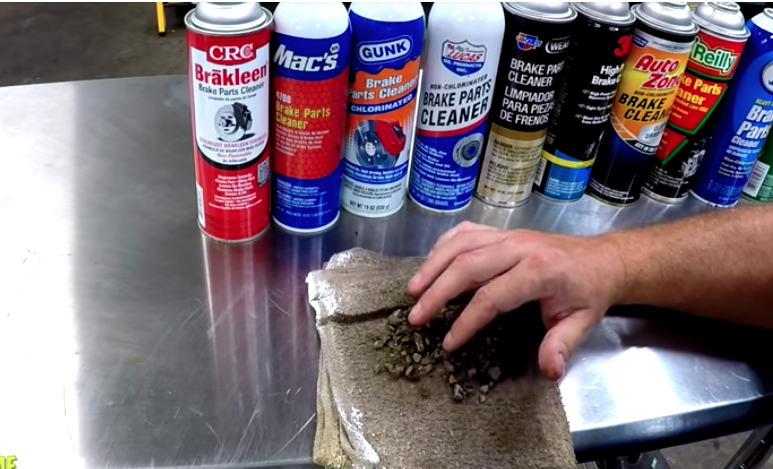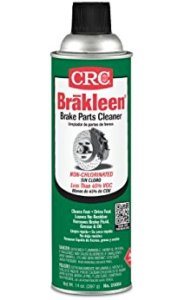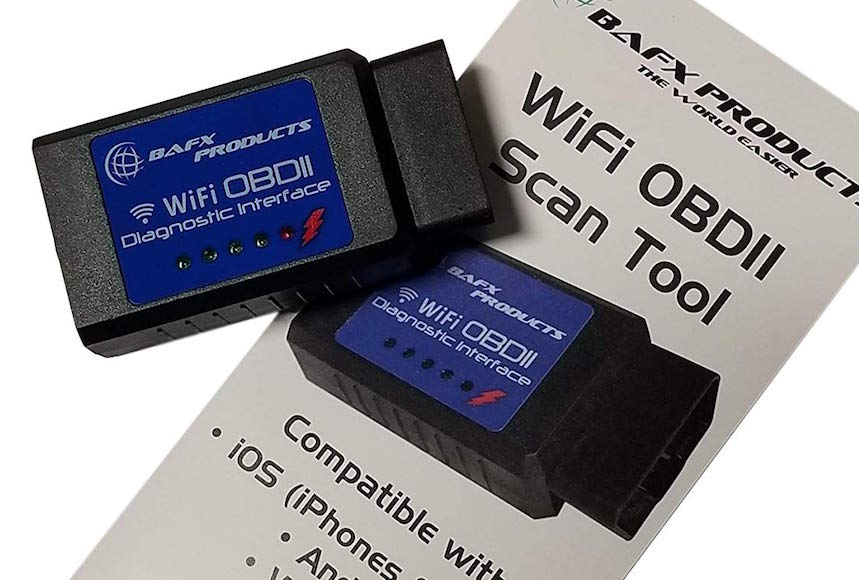How many of you guys or gals are tired of spending $3-7 per can of brake cleaner and penetrating oil? Only to occasionally break off the cap or lose the straw?

If that is why you are looking up how to make your own penetrating oil and brake cleaner than you are in the right spot. I am going to outline the best ingredients to use for brake cleaner and penetrating oil. You will save tons of money making your own penetrating oil and brake cleaner if you work on cars as a hobbyist or professional.
Homemade brake cleaner and penetrating oil is a great way to save money and reduce the amount of trash you create working on cars. Also, the homemade penetrating oil is highly recommended by professional mechanics who find it works better than any store-bought penetrating oils.
Table of Contents
Supplies Needed:
- Sure Shot Sprayer (If you want to have one for penetrating oil and another for brake clean then you will need two)
- Acetone
(Any Cheap Acetone at a Hardware Store Will Work Great!)
- Cheap ATF fluid (For Making The Penetrating Oil– Any type will work fine). Some people think Synthetic ATF works better, but I don’t think it is worth the extra money.
- A Vapor Respirator for when you’re using Acetone / Working on Brakes.
What is a Sure Shot Sprayer?
Answer: A Sure Shot Sprayer is an industrial pressurized sprayer. Anything you would buy in an aerosol can, Sure Shot Sprayers can spray safer. Fill with your choice of solvents or brake cleaner (or make your own) and pressurize with compressed air. It is basically a reusable aerosol can.
Why are Sure Shots great for using on car repair?
Answer: Because they allow us to fill them with our homemade penetrating oil, or the brake cleaner of our choice and reuse them. Plus, you never have to worry about the aerosol losing pressure over time. You maintain and choose the pressure of your choice and the solvent of your choice. They also have far superior spraying power, and can outperform aerosols every time.
They are safer to use, better for the environment, and less expensive than aerosols.
- Ideal for brake cleaners
- Penetrants
- Lubricants
- Solvent-Degreasers
- Paint Strippers
- Insecticides, and coatings.
- 200psi maximum pressure (working pressure: 80-150 psi)
Here is the Sure Shot Sprayer in Action on YouTube: These tools are AWESOME!
Brake Clean & Parts Wash Recipe & Directions:
- Read the instructions for the Sure Shot Sprayer / open the filler cap.
- Depending on what you’re doing you can use a bunch of different solvents.
- You can buy a gallon of CRC Brake Clean that Meets California Standards (From the comments it seems to be the chlorinated version– I don’t know how it is legal in CA) It seems to however work great, just don’t use it before welding.
- You can use straight Acetone. Just buy it at your local hardware store, try not to get it on your hands. Where a mask while using it as well.
- You can also use diesel, kerosene, or other solvents as you find out what works best for you. Diesel works well for general cleaning / same with Kerosene. However, if you want to not leave much residue stick to Acetone (or to use before welding).
- If you can it is best to use brake cleaner or anything with Acetone sparingly. Clean as much as you can first with Simple Green and a parts cleaner brush.
- Pressurize it with a bike pump or other compressed air source. (Follow the instructions on the Sure Shot)
- Enjoy the awesome versatility you now have with the Sure Shot to use whatever chemicals fit your needs.
Homemade Penetrating Oil Recipe & Directions:
If you do not have a sure shot sprayer and don’t plan on buying one, then you can mix this up right before using it in small batches. To make homemade penetrating oil the best recipe is simply a 50/50 mix (doesn’t have to be exact) of Acetone and Automatic Transmission Fluid. Apply directly to the rusty or stuck bolt and let it sit.
For best results, reapply and let it sit overnight or as long as possible and keep reapplying. Always make sure to use a metal container or spray bottle with zero plastic parts as Acetone dissolves plastic. I learned this the hard way.
Quick DIY Penetrating Oil Recipe:
- Fill the Sure Shot Sprayer with a mix of 50/50 Acetone and Automatic Transmission Fluid.
- Pressurize your Sure Shot Sprayer and spray it on the rusty or stuck part (do not use on rubber seals).
- Use in any spot that you would be spraying penetrating oil before.
- It works great like many people have shown on YouTube it outperforms many other name brand penetrating oils.
Homemade Penetrating Oil VS. PB Blaster & Other Store Bought Penetrating Oils:
What is the difference among brake cleaners?
There are tons of brake cleaners out there on the market.
There is also a lot of variance in the quality of brake cleaners available.
And depending on where you live, you have access to different chemicals.
For example, in California where I live, they have banned Chlorinated Brake Cleaners.
They can create an extremely toxic gas (Phosgene) if exposed to heat (welding, torches, etc). Chlorinated Brake Cleaners are also worse for the environment, and for you the user.
There Are Two Main Types of Brake Cleaner Chlorinated and Non-Chlorinated:
You may be wondering what is the difference between chlorinated and non-chlorinated brake cleaners.
I did some research and found out for you.
Chlorinated brake cleaners, like the name suggests, contains chlorinated atoms, or solvents, within its molecular structure. Most often these are Tetrachloroethylene (aka perchloroethylene or PERC) in brake cleaners. Arguably, chlorinated parts wash/brake clean work better for removing grease, dirt, and grime. However, these same chemicals, work GREAT as a solvent but it also works great to give you cancer and ruin the environment. Read more about the dangers of PERC exposure here. Pro tip: neither chlorinated or non-chlorinated brake cleaners are healthy to get on your skin or breathe, always use a respirator and gloves when using these chemicals.
The use of PERC in dry cleaning and aerosol cleaners in California has been banned since around 2007. I am not sure what, if any, other states have banned this chemical.
However, they are definitely worse for the environment, leave more residue, and if you accidentally expose them to heat or welding (you can get seriously messed up from inhaling the gas).
For more information on the difference between the two types of brake cleaner, you can read a very detailed report here.
Watch this video to see a side by side test of chlorinated versus non-chlorinated brake cleaners by YouTuber JeepSolid (Opens His Channel in New Window)
If you want information on why California banned Chlorinated Brake Cleaners click here to read more.
How To Find The Ingredients Of Any Brake Cleaner/Chemical Sold In Stores:
If you want to know what is in the Brake Cleaner you use. Simply search online for its SDS or (Safety Data Sheet).
For example here is the SDS (links to a .pdf file) for the Non-Chlorinated Brakleen by CRC (one of the favorite brands in the USA).
You can get the SDS for any Brake Clean product, and I suggest you check your favorite brand out.
This is directly from the SDS released by CRC for their Brakleen product.
Most, if not all Brake Cleaners, are going to include some mixture of these things.
Interestingly enough they also have to test the products LD levels on different animals. LD stands for lethal dose.
From that same report, you can see how much of the different chemicals it takes to kill a rat / rabbit.
Question: Is Using Acetone Harmful to my Health?
Answer: For more information on specifically how dangerous acetone is to you read here. From my understanding, Acetone is not that bad for you. As long as you aren’t inhaling it directly over long periods of time. Our bodies can process it over the course of a day, and I guess we naturally have some that occurs in our bodies.
Conclusion:
In 2018, You Should Be Making Your Own Brake/Parts Cleaner & Penetrating Oil.
It will save you money, time, and work better.
If that isn’t convincing enough just think about all the trash you will keep out of the landfill. Work smarter, more efficient, and save money.
Hope I have convinced you to buy what you need to make your own pressurized sprays.
Here is the list of things you need again. Links open to Amazon or Home Depot for the Acetone.
- Sure Shot Sprayer (If you want to have one for penetrating oil and another for brake clean then you will need two)
- Acetone (Links To Home Depot) Any Cheap Acetone Will Work Great!
- Cheap ATF fluid (For Making The Penetrating Oil– Any type will work fine). Some people like Synthetic More.
- A Vapor Respirator for when you’re using Acetone / Working on Brakes. (If you want to be extra safe).
If you love reading about tools check out the top ten cool automotive tools that professional mechanics and detailers love using. Do you own any of these ten?










Pingback: How to clean and lubricate a sticky throttle cable - AGradeTools.com
Pingback: How to fix squeaky brakes on a car - AGradeTools.com
Pingback: The Tools That 95 Mechanics Wish They Would've Learned About Sooner - AGradeTools.com
Pingback: How To Remove Rusted Lug Nuts From a Boat Trailer - AGradeTools.com